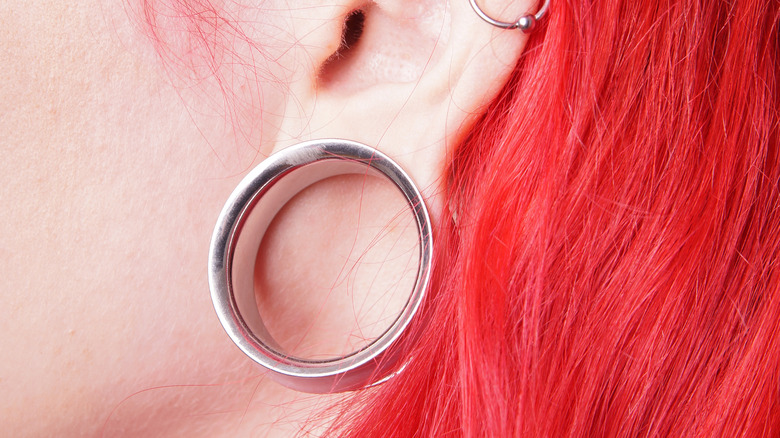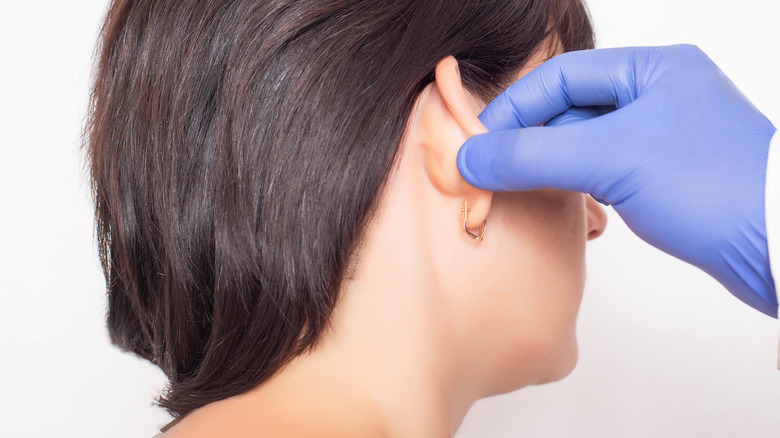Here's How To Fix Your Stretched Earlobes
If you have worn earrings for any length of time, you may have had some concerns over stretched earlobes. Whether from heavy earrings, an accident where one earring got caught and pulled, or wearing earrings designed for stretching, it is possible to address earlobes that have been stretched out, even to a significant degree.
According to Leaf, the first step is to give your earlobes a chance to heal on their own. Remove your earrings and allow the elasticity in your skin to close the hole as much as it can. This only works for piercings that are 2-gauge or less, however, so if your holes are larger, you are going to need professional intervention.
In this case, visit a plastic surgeon's office. Here, they may recommend one of several types of procedures. If the holes are small enough, they might attempt a repair using a punch tool, according to SELF. This is a small device that punches a hole just slightly larger than the dimensions of the piercing hole. The edges of the wound will be brought together with stitches, allowing them to heal together into one complete earlobe.
But if that solution does not suffice, there are other options for correcting this problem.
Larger holes still have options
For larger holes that do not provide enough skin for a punch repair, the doctor will go to work with a scalpel. They will make a fresh wound around the inside perimeter of the piercing, then pull the edges of the piercing together and suture it. Again, the edges of the wound will heal into one earlobe (via SELF). Since there is less earlobe material to work with in the case of larger piercing holes, the doctor may use one of several different techniques to achieve as natural an effect as possible.
The procedure is done under local anesthesia and usually takes about 15 minutes to an hour, according to Allure. It is pricey, however, ranging from $500 to $2,000 for two ears and is not usually covered by insurance.
On the bright side, it is possible to have your ears pierced again after reconstruction. Talk to your doctor, who may do piercing themselves to provide the best outcome. Otherwise, it's important to let the piercer know you have had reconstruction done so they don't try and re-pierce over reconstructed tissue (via Leaf).

